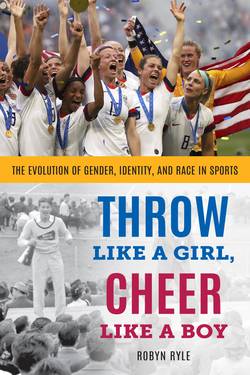Читать книгу Throw Like a Girl, Cheer Like a Boy - Robyn Ryle - Страница 7
На сайте Литреса книга снята с продажи.
Rooter Kings, Yell Leaders, and the
Birth of Cheerleading
ОглавлениеTo understand the strange history of gender in cheerleading, we have to go back to the very beginning, to the story of when cheerleading first began. The University of Pennsylvania claims to have organized the first-ever cheer ensemble in 1894, though the Princeton Yell, a pep club, had already been around for a decade. These groups of men were sometimes called “rooter kings” or “yell leaders” and they became a crucial part of the college football scene. Cheerleading was important enough to have its own national fraternity—Gamma Sigma—and every year they partnered with sports journalists to pick an All-American cheer squad, the best of the best in the cheerleading world.[3]
The skills associated with being a male cheerleader weren’t that different from what we expect from cheerleaders today. They yelled and led the crowd in cheers. They had megaphones, which they often tossed around. They would arch their body from side to side and shake their fists at the crowd as they encouraged them to enthusiastically root for their team. These early cheerleaders wore full-length white trousers with a V-neck sweater and a hat, very different from the short skirts we’ve come to expect today. Male cheerleaders were so important to college football games that they sometimes got blamed when the team lost. As cheerleading evolved, it came to incorporate some of the more athletic aspects that we associate with cheerleading today. Squads began to include gymnastics, like at the University of Kentucky, where boys wishing to try out had to first complete a six-week tumbling course.
